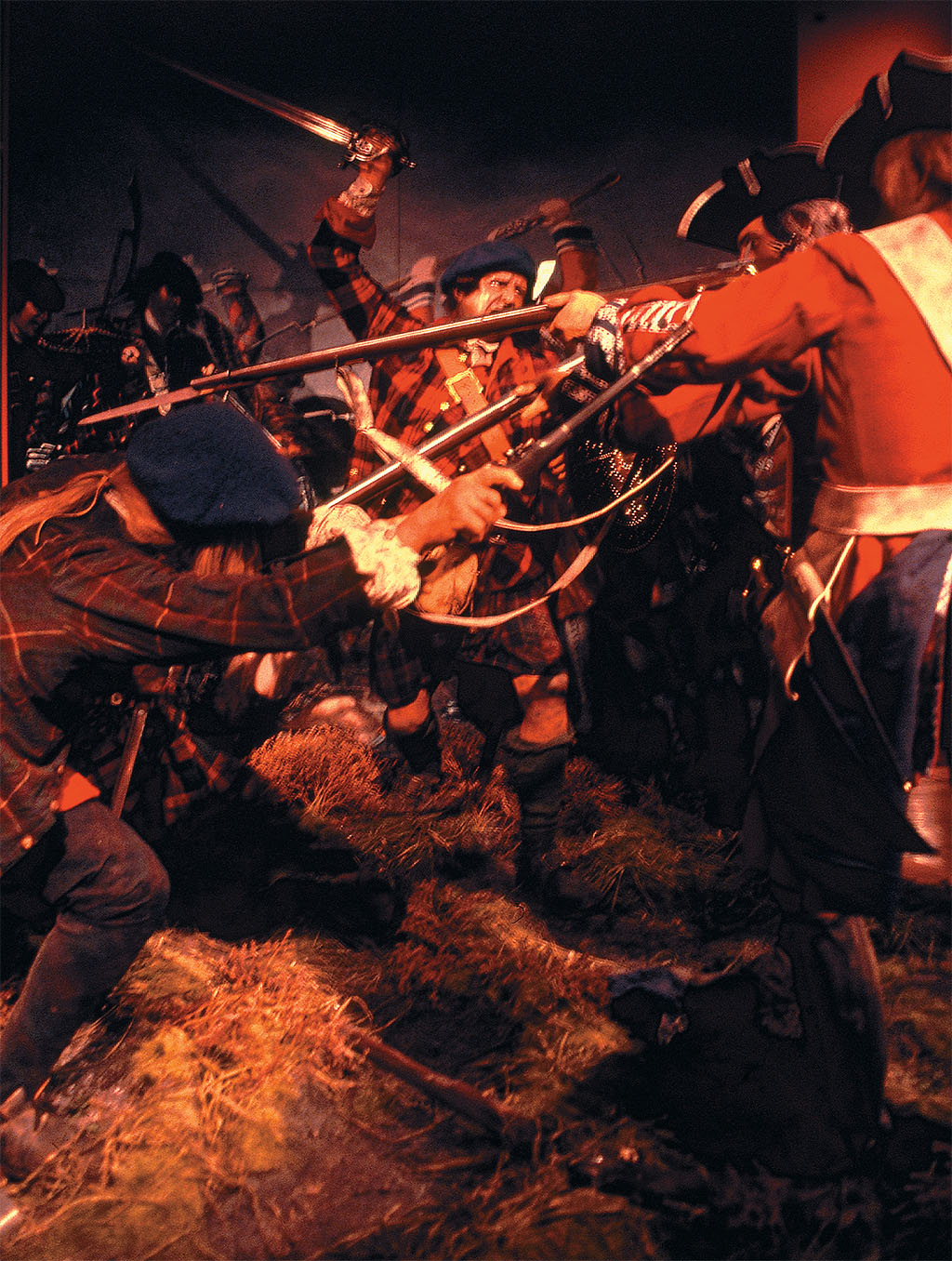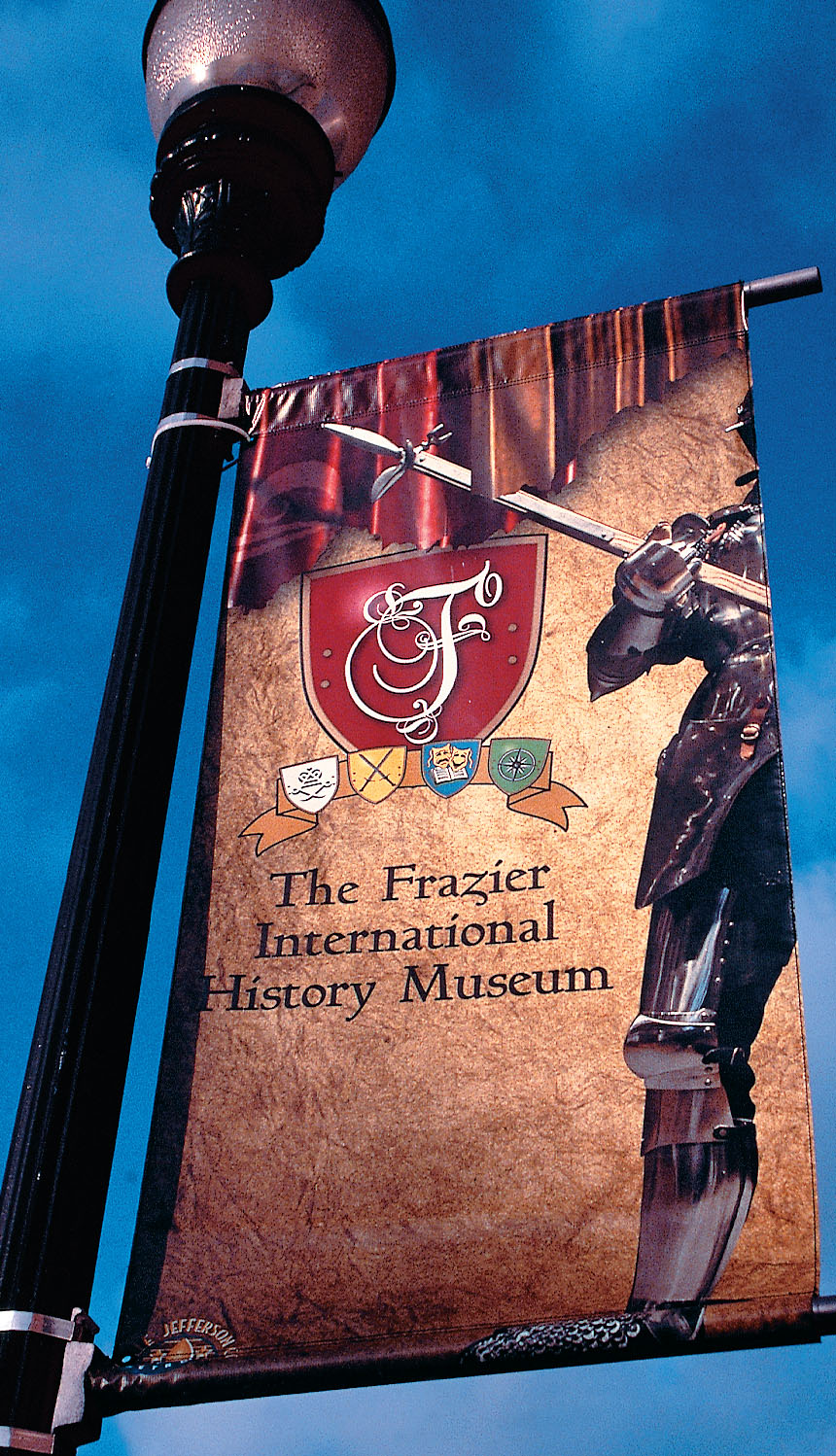
SWORDPLAY AND BILLHOOKS, Zulu warriors and Roundheads: in Louisville? It may come as surprising news to British Heritage readers that the only British national museum to have a branch in the United States has it in—of all places—Louisville, Kentucky. Yes, the Royal Armouries Museum, with its headquarters in Leeds and an outpost in the Tower of London, resides also in the Bluegrass State at the Frazier International History Museum. I had never heard of the Frazier museum either, and decided to go to Louisville to find the story.
Sure enough. There are British arms and armaments galore, from the Norman Conquest to the Boer War, across Louisville’s Main Street from the Louisville Slugger factory and museum. The Kentucky Museum of Arts and Crafts and an IMAX theater are right down the tree-lined street.
The Frazier International History Museum just opened its doors in 2004 (then as the Frazier Historical Arms Museum). Housed in gleaming former tobacco warehouses that back onto the Ohio River and front on Main Street, the Frazier is largely a gift to the city from its eponymous benefactor Owsley Brown Frazier, founder and CEO of the museum. The prominent Louisville philanthropist established the museum to give his private arms collection of 30 years to the public.
The Royal Armouries, more formally known as the British National Museum of Arms and Armour, meanwhile, had been considering a partnership with major museums in, among other cities, Philadelphia and Chicago. It seems that Frazier beat the Big Time, however, and forged a unique international partnership that brought the Royal Armouries to Louisville.
If the Frazier itself is a 21st-century museum, the Royal Armouries takes pride in being Britain’s oldest national museum. In fact, it has occupied buildings in the Tower of London since the 11th century—as long as the tower itself has been in existence.
[caption id="HandsAcrosstheSea_img2" align="aligncenter" width="1024"]

DANA HUNTLEY
Make no mistake, the Frazier is a world-class museum, with a full calendar of educational programming, costumed interpreters, multimedia presentations—and a jousting ring. The Royal Armouries of Great Britain occupies the top of three floors. A yeoman warder welcomes visitors to a first stop at the Tower of London, where the Royal Armouries are introduced. The Tower Gallery recounts the history of the site from the Romans to the building of the Norman castle in 1080 to the Tower today. Then visitors travel back to the Battle of Hastings.
A series of dioramas sets the stage for an introduction to every age of British warfare from William the Conqueror’s big day to the colonial wars of the late 19th century. Visitors go below deck during the naval defeat of the Spanish Armada in Elizabeth I’s day and charge with the Light Brigade at the Crimean War’s Battle of Balaclava. They relive the War of the Roses and England’s bloodiest battle ever at the 1461 Battle of Towton. The Civil War’s pivotal Battle of Marston Moor in 1643, the Battle of Blenheim, the devastation of the Jacobites at Culloden and the heroic defense of Rourke’s Drift in the Zulu Wars: This is British military history with a flare. There is even a depiction of John Smith at Jamestown, every bit an English captain in the Anglo–Indian colonial conflict in the summer of 1609.
[caption id="HandsAcrosstheSea_img3" align="aligncenter" width="860"]

DANA HUNTLEY
Every period along this timeline of tableaus displays and explains the weaponry of the era from the Royal Armouries’ vast collections, punctuated by pieces of historical significance such as the armor of Sir Philip Sidney. Alcoves throughout screen short, fascinating Royal Armouries videos on the use of the arms in training and battle. There are displays on heraldry, on the difference between the jousts of peace and the jousts of war, medieval archery and the making of chain mail armor.
Regular live character performances throughout the day at the Frazier include action at the medieval tournament lists, predictably enough a hugely popular activity with the many school groups who visit the Frazier. After all, who doesn’t like a bit of good swordplay?
It is easy to get caught up in the ancient weaponry—offensive and defensive. There simply isn’t anywhere else in this country with such a collection, or a place to learn that a suit of armor had something like 220 plates and weighed about 75 pounds.
Incidentally, full plate armor was in use for about 2½ centuries. By the end of Elizabeth I’s reign, armor had become less useful with the development of gunpowder. Cumbersome and slow-moving knights became too easy a target for the muskets. Bit by bit, pieces of armor were discarded for increased mobility.
This is an absorbing walk through 800 years of British history. The belligerent use of arms and armaments is only a part of the story, of course. The displays, interpretations and reenactments remind us that even in the galleries of weaponry, the Royal Armouries is “not just about battles, conflicts and bloodshed, but also art, technology and craftsmanship. Its subject matter is the whole of human history. It is a museum about how people lived, and what they believed and held dear, about preserving life as well as taking it.”
It does seem only fair to point out that the Royal Armouries hardly exhausts the interests of the Frazier. Among other artifacts on the two lower floors are Jesse James’ six-shooters, the family Bible of Daniel Boone, Teddy Roosevelt’s African safari rifle, Geronimo’s bow and quiver, Buffalo Bill’s sharpshooting rifle, ivory-handled Colt pistols belonging to General Custer and a hunting rifle presented to George Washington in 1791. Historic weaponry is the star attraction.
Eight or nine interpretive performances a day, from the museum’s repertoire of more than 50 such theatrical depictions, ensure that every visit to the Frazier is unique. The museum’s programming includes changing exhibits, summer camps for kids and a creative calendar of events ranging from a “Mother and Daughter Tea Party” to Pub Night complete with Celtic folk music.
The Royal Armouries at Louisville is exciting. British history comes to life here in a way that is unique in this country. Whether you regularly cross the pond or have never traveled to Britain, the Frazier International History Museum is an impressive, educational and thoroughly enjoyable experience. Hie thee to Louisville, forsooth.
[caption id="HandsAcrosstheSea_img4" align="aligncenter" width="1024"]

DANA HUNTLEY
[caption id="HandsAcrosstheSea_img5" align="aligncenter" width="1024"]

DANA HUNTLEY





Comments